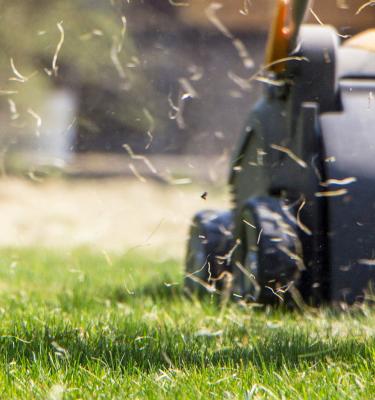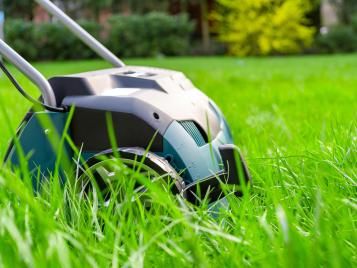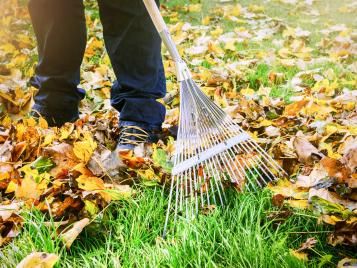
What is a Lawn Scarifier And How to Use One
Our guide to using a lawn scarifier
If you’ve ever wondered what a lawn scarifier is and how to use it, take a look at David Domoney’s handy guide.
Breadcrumbs

If you’ve ever wondered what a lawn scarifier is and how to use it, take a look at David Domoney’s handy guide.
A lawn scarifier is a machine that removes thatch – a fine layer of old grass stems, dead moss and other debris like leaves that gets compacted in your lawn over time. It can stop water and nutrients getting to the soil below and stops the grass rooting properly - and can even suffocate them.
A scarifier can either be manual or electric. A lawn scarifier acts as an aerator for the soil, cutting through like a high-powered rake, making it healthier, (almost) weed-free and longer-lasting.

Scarifying is really important, especially in the Autumn, because if dead grass cuttings, moss and leaves are allowed to sit on the lawn’s surface, they can prevent rain water from draining and the soil from receiving oxygen. The water and moisture will sit on top, making your lawn soggy and gradually it will become patchy and thin, allowing moss and weeds to take over.
Let’s take a look at some of David’s top tips on how to get the best out of your new garden tool.
A few weeks before you plan on using your lawn scarifier, inspect your lawn for any live moss. You’ll need to get rid of this before you do anything else. Using a good moss killer, spread this over your lawn as per the instructions. This is a very important step as you don’t want to be spreading the airborne spores of living moss all over the garden with your scarifier, which could make it worse!
Once you are sure that the moss has died (it should look black or brown and dry) mow your lawn on a dry day, with the mower on a low setting. This will make it easier for the grass scarifier to get through to the soil.
Start with the lawn scarifier on a high setting and go over the surface a couple of times. Then repeat the process at angles but lower the settings on each pass.
It’s a great idea to add some more grass seed at the end of scarifying, especially if your lawn is looking a bit tired. You should then cover the seed with Miracle-Gro Lawn Dressing to protect them while they germinate. This technique is often referred to as ‘overseeding’. With a little TLC, your lawn will be looking as good as new in a week or so.
The best time to scarify your lawn is in Autumn after a long hard Summer, when the lawn has been used and is quite compacted.
It’s best to only do this once a year as scarifying your lawn can take its toll on the grass and roots, so you should always keep it to a minimum.

When scarifying your lawn there are actually other tools you can use to get a similar if not identical result. A simple garden rake is the most popular scarifier alternative, allowing you to control the pressure you put on the lawn with a more lightweight tool.
If you have a smaller lawn, you can always just use a simple spring tine garden rake. It’ll take a bit longer but you can control the amount of pressure you put in and it’s great exercise!
Take a look at our guide to look after your lawn all year round.
Looking for specialised gardening advice? Or just hunting for a specific product? Visit your local store and get help from dedicated staff.